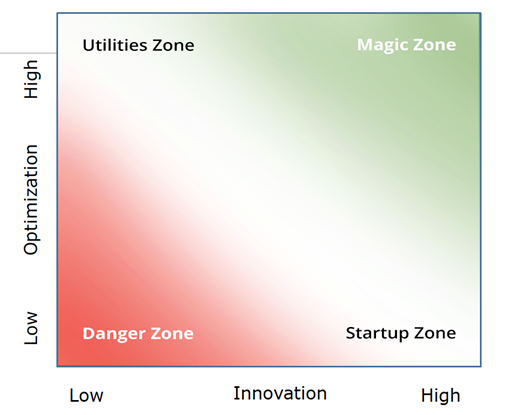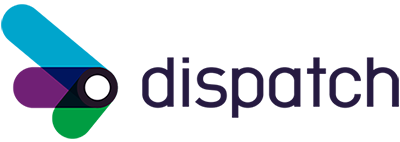You could say that businesses are like Las Vegas gamblers.
In this analogy, every company chooses from a row of slot machines with a limited amount of shiny nickels for placing bets. And they have to decide where to spend their hard-earned money to get the absolute best return. Each hypothetical slot machine offers a different rate of return – but no one knows exactly which machines are best.
So how does the gambler decide where to invest?
This is known as the classic Multi-Armed Bandit problem. It is a probability theory exercise that asks:
- When presented with a series of opportunities with limited knowledge of their rate of return (slot machines with gleaming arms all waiting to be pulled), how do you decide where to focus?
- Using limited resources, how do you get the most information possible to give yourself the best chance to succeed?
In the academic exercise, the best bet is an explore/exploit algorithm. Using the resources available, the algorithm can help calculate exactly how many slot machines to try out and “explore,” before choosing based on the results which to keep trying, or “exploit.”
In life, we face many parallel dilemmas. As business leaders, we face nearly the same challenge: every day, we must decide whether to spend our limited resources exploring new possibilities or exploiting our current successes. In their book Algorithms to Live By, Brian Christian and Tom Griffiths detail how to apply the explore/exploit algorithm to our decision-making.
The Dilemma in Business
In business, we don’t use the phrases “explore” or “exploit,” but instead, we talk about innovation and optimization. Like the multi-armed bandit problem, we have limited resources – employees, time, money, customer patience – to apply to a sea of opportunities. Do we venture out for untested, greenfield opportunities and innovate, or do we become more efficient at extracting value and optimize?
These two approaches seem like opposites. Famed venture capitalist Mike Volpi agrees:
“Innovation and optimization are strange bedfellows. Every CEO would like to have both, but, in practice, they are forces that pull against each other – a bit like antagonists. The pursuit of business optimization can suck creativity and innovation out of the air. The blind pursuit of innovation can bankrupt a company by leaving behind a strew of creative but half-finished projects.”
Every company lives somewhere on a continuum between these options. Departments or processes may even be in different places – some parts of the business may need optimization, and some need innovation.

If the company is purely innovative, they risk becoming an inefficient, expensive business. From New Coke to Google Glass, there is a long list of innovations for innovation’s sake that simply didn’t pan out.
On the other hand, being too focused on optimization is a race to the bottom that will not survive market changes, and we can all think of brands that ended up in this graveyard: Sears, Blackberry, and most recently Pier One.
Benefits To Both
That said, neither approach is wrong. Often, company type or market conditions will decide which approach our companies take.
Innovation-first organizations are usually in dynamic markets or are startups where technology changes fast. In this case, time is a primary metric in the form of speed, agility, and flexibility. Change is so fast that it can be hard to optimize, so these companies end up with many “minimum viable products” that may be inefficient.
Optimization-first companies are usually in slower-moving or commodified markets where control and efficiency are a priority. IT is usually centralized, and very complex, custom, and intensive solutions are built to make the business work (something we would call “hard tooling”).
The culture and systems of the organization are usually biased towards one or the other side.
The challenge for most is to learn to simultaneously optimize the existing business while not becoming so rigid that new business opportunities are missed.
The Innovative Optimizer
Is the innovative optimizer a myth? No. Some of the most famous companies in the world are undeniable innovative optimizers.
No one denies that Apple is an innovative company, yet it leverages incredibly efficient production for massive profit margins.
Lego, one of the most well-loved brands globally, famously pulled themselves back from the brink in the late 2000s to become an innovative optimizer, offering whimsical children’s toys of exceptional quality while churning out billions of plastic bricks every year.
The elusive innovative optimizer is the gold standard for the modern enterprise, but many companies fall somewhere in between, so we visualize them on a quadrant that looks like this:

Why Is it So Hard?
Innovative optimizers are rare. Why? The textbook answer says that it’s just about balance, and most companies don’t know the right time to employ either strategy.
But, when talking to our clients, we direct the conversation to their processes. Processes are where work gets done in companies – they are the bedrock of anything the company does. Whether it is time to innovate or optimize, both approaches require people and software to execute processes.
Many suffer from the “tyranny of the process.” This is where processes hold the organization back in a variety of ways:
- The company is trapped because changing the process is too painful.
- The process or custom tooling is so complex that no one wants to optimize it.
- The process is so ad hoc that no one really knows how it works.
Processes are inherently tied to technology. Processes are, by definition, when employees and technology work together, and that means that companies often let the technology tools they buy dictate the processes they use.
In addition, there are typically “gaps between the apps” filled with manual workflows and opportunities for human error. Problems or outright failures will arise within these gaps on a regular basis.
The key is to look for solutions built for both innovation and optimization in the same platform while closing these gaps between the apps.
Innovative optimizers are so rare, because for decades, the amount of elite skills and tools needed to maintain both the speed required for innovation and the thoughtfulness required for optimization was very expensive. In addition, the tooling for connecting apps has been historically very rigid and change-averse.
Enter Workato
Workato is a great example of those very rare solutions that companies can use to both work at the speed of an innovative startup with its low code no code approach, but with the stability and governance that an optimizer would need.
To help businesses become innovative optimizers, we are a proud platinum integration partner with Workato. It is a deceptively easy to use and powerful platform that is truly enterprise grade. They are a leader with every analyst in the iPaaS space, but they are ultimately an integration-led automation platform.
The ability to connect every app in the organization is what it takes to fill the gaps between the apps, and make the technology mold to your own processes, rather than the other way around.
When we use Workato, we can get to value faster than with any other platform in the market, and our clients have the confidence that everything we build is scalable, secure, and flexible enough to be optimized and changed later at any time.
Staying Competitive for the Future
As more companies recognize the need to become innovative optimizers and development continues to democratize with the growth of low code no code, more and more companies are going to reap the benefits of embracing this rare approach.
But the time is now to get ahead – while “innovative optimizers” are still rare among a sea of gamblers who are still struggling to decide which slot machine to choose, the best companies in the world will recognize the power that is available to them to change and take the opportunity.
And it may be time to ask yourself: are you an innovator? An optimizer? What holds you back today from embracing both?
Cameron Hay is the CEO of Dispatch Integration, a data integration and workflow automation company with clients in Canada, US, Europe and Australia. He has over 30 years of leadership experience in various technology-oriented industries.
